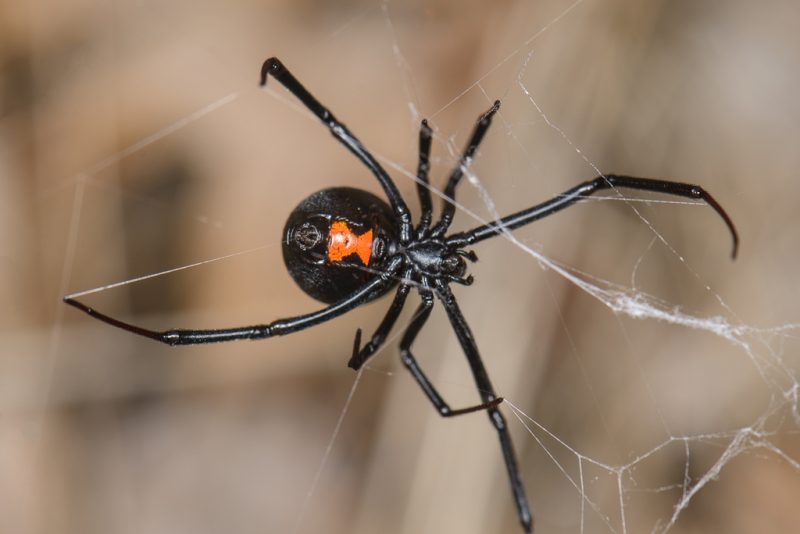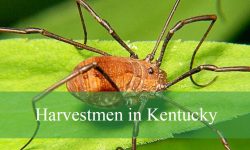In the shadow of Nevada’s sagebrush plains and rocky desert canyons, a quiet hunter waits. Her body gleams like polished obsidian, marked by a crimson hourglass that glows faintly in the dim light. She is one of North America’s most misunderstood creatures — the black widow.
Feared for her venom and her name, the black widow in Nevada has inspired more myths than facts. But beneath the web of fear lies a creature far more fascinating — one of nature’s most efficient survivors, quietly weaving her story through the harsh landscape of the American West.
In this in-depth article, we reveal the truth about black widows in Nevada — their species, behavior, venom, habitat, and role in the desert ecosystem. What you’ll discover might just challenge everything you thought you knew about this infamous spider.
Meet Nevada’s Black Widow

The Desert Widow
Nevada is home primarily to the Western Black Widow (Latrodectus hesperus), a member of the family Theridiidae. Recognized by its shiny black body and the iconic red or orange hourglass marking on the underside of the abdomen, it is both beautiful and dangerous in equal measure.
Adult females typically measure about 1.5 inches including the leg span, while males are smaller, lighter brown, and far less venomous. The female’s glossy exoskeleton and striking hourglass pattern serve as a warning — nature’s version of a hazard sign.
But despite their fearsome reputation, black widows in Nevada are not aggressive. They strike only when threatened or trapped. In truth, they prefer retreat to confrontation, choosing silence over violence in nearly every encounter.
Habitat and Range
From the Mojave Desert to suburban neighborhoods of Reno and Las Vegas, black widows thrive in warm, sheltered places. They prefer quiet, undisturbed corners — under rocks, in sheds, barns, woodpiles, and crawl spaces.
They are masters of concealment, building irregular webs low to the ground, often near human structures. The web itself looks chaotic — a messy tangle of silk — but to the widow, it’s a sophisticated trap designed for efficiency.
Even in Nevada’s extreme heat and arid winds, the Western Black Widow endures, finding shelter in the cool recesses of man-made and natural structures. Their adaptability makes them one of the desert’s most successful predators.
Anatomy and Adaptation
Designed to Survive
Every part of a black widow is built for survival in the desert. Their glossy exoskeleton reduces water loss — a critical adaptation for Nevada’s dry climate. Their long, thin legs allow them to feel vibrations across the web, detecting prey or danger instantly.
The silk they spin is five times stronger than steel of the same thickness. Each strand carries information — the size, direction, and movement of the intruder — turning the web into both a home and a sensory network.
Inside, the widow’s venom glands produce a potent neurotoxin known as latrotoxin, designed to paralyze prey rather than kill. It’s a weapon of precision, evolved not for offense, but for sustenance.
The Hourglass Mystery
The red hourglass mark isn’t just decoration. Biologists believe it serves as a warning coloration to predators like birds and lizards. Studies show that animals often avoid striking brightly colored insects and spiders, having learned through evolution that such markings mean danger.
Curiously, not every black widow in Nevada has a perfect hourglass — some have split markings, yellow or orange variations, or none at all. These subtle differences hint at local adaptation, shaped by generations in the sun-scorched deserts of the Southwest.
Behavior and Daily Life
The Solitary Web Weaver
The black widow is a solitary spider. Each female constructs her own web, typically about a foot in diameter, in dark, undisturbed corners. Once established, she rarely leaves, spending months — sometimes years — in the same spot.
She relies on her web for everything: shelter, food capture, mating, and egg-laying. When prey touches the sticky threads, she reacts instantly, biting and wrapping it in silk before consuming it slowly.
A widow’s web is not symmetrical like that of an orb-weaver. Instead, it’s chaotic, resembling a trap more than art. But to the black widows in Nevada, this disorder is deliberate — every angle, every strand, designed for maximum entanglement.
The Misunderstood “Widow”
The name “black widow” stems from the female’s reputation for eating her mate after copulation. While this behavior does occur, it’s far less common in the wild than legend suggests.
In natural conditions, males usually escape unharmed after mating. Only in confined or resource-scarce environments does the female turn cannibalistic — an act driven by survival, not cruelty.
In truth, black widows in Nevada display complex mating behaviors. Males perform elaborate dances on the edge of the web, tapping and vibrating strands to identify themselves as potential mates rather than prey. It’s a delicate negotiation that often ends peacefully.
Diet and Hunting Techniques
Masters of Ambush
Unlike hunters that stalk or chase prey, black widows are patient ambushers. Their diet includes insects like flies, beetles, crickets, grasshoppers, and even small scorpions.
Once an insect becomes entangled in the sticky silk, the widow strikes with surgical precision. The venom acts within seconds, paralyzing the prey, allowing her to feed safely.
In the deserts of Nevada, this ambush strategy makes them highly effective pest controllers, keeping insect populations balanced around human dwellings.
Recycling the Web
A widow’s web isn’t permanent. Over time, sand, dust, and debris reduce its stickiness. Rather than abandon it, the spider consumes the old silk and spins new strands, recycling valuable protein in the process.
This behavior exemplifies the efficiency of black widows in Nevada — nothing is wasted, and every resource is reused in a constant cycle of adaptation.
Reproduction and Egg Sacs
Life and Renewal
Mating occurs in spring and summer when temperatures are high. After successful mating, the female lays up to 250 eggs per sac, producing several sacs during the season.
The sacs are creamy white and papery, suspended in the web’s center. Inside, spiderlings develop for about three weeks before hatching.
Once they emerge, the young disperse by ballooning — releasing silk threads into the wind that carry them across miles. In this way, black widows in Nevada spread silently, populating new territories with every breeze.
A Short Life, a Long Legacy
Males live only a few months, while females can survive up to three years in captivity and about one year in the wild. Despite their brief lifespan, their reproductive success ensures that Nevada’s widow population remains stable.
Even as predators, their numbers rarely surge uncontrollably — a balance maintained by environmental conditions and natural enemies like mud dauber wasps.
The widow’s story is one of fragility wrapped in resilience — delicate webs spun in the face of desert extremes.
The Venom and the Bite
The Power of Latrotoxin
The venom of black widows in Nevada is among the most potent of all spiders in North America. However, it’s crucial to understand that “most potent” does not mean “most deadly.”
Their venom contains α-latrotoxin, a neurotoxin that disrupts nerve signal transmission. In humans, a bite may cause muscle cramps, pain, sweating, and nausea — a condition known as latrodectism.
Fatalities are extremely rare, thanks to modern medicine and the spider’s low venom yield. Most bites occur when people accidentally press against a hiding widow — while moving firewood, gardening, or reaching under debris.
How Dangerous Are They, Really?
In truth, black widow bites are defensive, not aggressive. These spiders prefer flight over fight, biting only as a last resort.
About 80% of bites result in mild symptoms, and recovery occurs within days with proper care. Antivenom exists and is effective in severe cases, though it’s rarely needed.
The real danger lies in misunderstanding — in fearing what is better respected. The black widow in Nevada is not a villain, but a vital part of the desert ecosystem.
Black Widows and the Nevada Ecosystem
Nature’s Pest Controllers
Every black widow plays a role in the balance of the desert. Their diet helps control populations of moths, beetles, grasshoppers, and other insects that damage vegetation and crops.
By reducing pest density, they indirectly protect plants and maintain ecological equilibrium — a silent, natural form of pest management that costs nothing and harms nothing.
In both rural and urban Nevada, these spiders serve as unsung allies, keeping ecosystems stable from beneath porches, rocks, and fences.
Prey and Predators
Even predators have enemies. The black widows in Nevada face threats from parasitic wasps, especially the mud dauber, which paralyzes the spider and seals it inside a nest to feed its larvae. Birds, lizards, and centipedes also prey upon them when given the chance.
This dynamic ensures that no species dominates — the endless balance of predator and prey that defines desert life.
Myths and Misconceptions
Myth 1: Black Widows Are Aggressive
Truth: They are shy and reclusive. Most bites occur when humans invade their hiding places.
Myth 2: One Bite Is Always Fatal
Truth: Deaths are extremely rare. The last confirmed fatality from a black widow bite in the U.S. occurred decades ago.
Myth 3: Every Female Eats the Male
Truth: Only occasionally, and usually under stress or captivity. In nature, most males survive post-mating.
Myth 4: They Invade Homes Intentionally
Truth: They prefer quiet outdoor spaces. Indoors, they appear only by accident or when shelter is scarce.
The truth is that black widows in Nevada are far less menacing than popular culture suggests. Their existence is one of quiet balance, not aggression.
Human Interactions and Prevention
Where They’re Commonly Found
In Nevada, black widows tend to appear:
-
Under patio furniture
-
Inside garages, sheds, or crawlspaces
-
Around outdoor plumbing
-
In firewood stacks or rock walls
They favor dark corners with minimal disturbance — ideal hunting grounds for nocturnal insects.
Prevention Tips
To minimize encounters with black widows in Nevada, follow these simple steps:
-
Shake out shoes, gloves, and bedding before use.
-
Seal cracks and gaps in walls and foundations.
-
Reduce clutter in garages and storage areas.
-
Keep firewood elevated and away from the house.
-
Wear gloves when gardening or moving rocks.
These precautions help ensure coexistence without fear — respecting the spider’s space while protecting your own.
Conservation and Environmental Importance
The Balance of Fear and Function
Though often feared, black widows in Nevada are critical for desert health. Their predation regulates insect populations, and their ecological role extends far beyond human perception.
Removing them disrupts food webs, leading to increases in pest insects that harm vegetation and wildlife.
As desert habitats face growing threats from development and climate change, conserving native species — even the feared ones — becomes essential.
A Creature of Resilience
The black widow endures in a world where survival demands both strength and subtlety. Through drought, fire, and human expansion, they persist quietly, adapting with grace.
Their story is not one of menace, but of mastery — of thriving in silence while maintaining the rhythms of nature.
In every web spun beneath a Nevada porch or canyon rock lies a reminder: life’s most powerful forces often dwell in the smallest forms.
Surprising and Little-Known Facts About Black Widows in Nevada
-
Female black widows can live over three years in captivity.
-
Their webs are made of silk stronger than steel.
-
Only females have the distinctive red hourglass marking.
-
Latrodectus hesperus is the only black widow species native to Nevada.
-
They can detect vibrations as faint as a footstep through their webs.
-
A single egg sac may contain over 200 spiderlings.
-
Male black widows are brown or tan and rarely bite.
-
Their venom is 15 times stronger than a rattlesnake’s by volume.
-
Mud dauber wasps are their main natural enemies.
-
Most bites occur during summer when temperatures peak.
FAQs About Black Widows in Nevada
Are black widows common in Nevada?
Yes. Black widows in Nevada are widespread in both urban and rural areas, especially in southern regions like Las Vegas.
Where do they hide?
In dark, dry places such as garages, sheds, stone walls, and under outdoor furniture.
What should I do if bitten by a black widow?
Clean the wound, apply ice, and seek medical attention. Most cases resolve with supportive care.
Are male black widows venomous?
They produce venom but lack the potency and fang size to harm humans.
How can I identify a black widow?
Look for a shiny black body with a red or orange hourglass marking on the abdomen.
Are black widows beneficial?
Yes. They control insects and pests, playing a vital ecological role.
Can black widows survive winter?
They can, by sheltering in insulated crevices or man-made structures.
Do black widows live in groups?
No. They are solitary except during mating or when spiderlings first hatch.
Are there different species in Nevada?
Only Latrodectus hesperus, the Western Black Widow, is native, though others may wander from neighboring states.
Do they jump or chase people?
No. Black widows in Nevada never chase or jump at humans — their instinct is always to retreat.
Final Thoughts
In the deserts and suburbs of Nevada, black widows weave a story of fear, fascination, and misunderstood beauty. They are survivors, architects, and regulators — small but significant threads in the desert’s web of life.
Though their venom inspires caution, their true nature deserves respect. They are not monsters lurking in the shadows, but ancient keepers of balance in an unforgiving land.
The truth about black widows in Nevada is simple: they are not here to harm, but to coexist — reminders that even in fear, there is wonder, and even in darkness, there is life.






